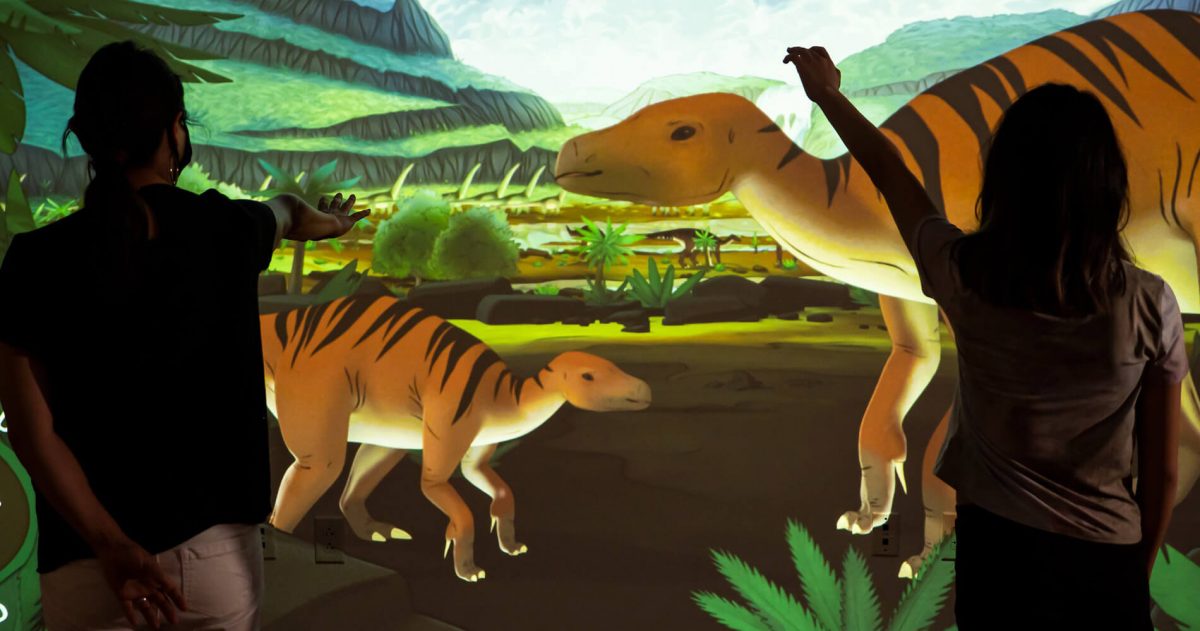Accessing information with a wave of the hand is becoming a reality, thanks to Ideum. Ideum is an interactive design firm that creates installations that use emerging technology such as touch tables, video walls, and projection mapping, that tell a compelling story and lead to meaningful visitor experiences. These approaches are used in a variety of industries such as museums, aerospace, government, and education to encourage collaboration in social environments. These installations have positioned the organization at the forefront of the industry and has laid the foundation for their team to explore touchless technology, a prominent need stemming from the COVID-19 pandemic.
Currently, Ideum is leveraging touchless technology for public spaces. Their team is working with the National Gallery of Art in Washington D.C., to design a touchless kiosk for museum goers. This kiosk will help ensure the health and safety of visitors, as they explore the world of art. This project is a proof-of-concept for a larger open-source initiative that the company championing called, Touchless.Design.
But, the National Gallery project isn’t their first development with this type of technology. Ideum has a history with gesture and voice recognition that dates back more than five years. Their team has generated touchless, interactive exhibits for zoos, science centers and children’s museums through motion-sensing and tracking devices. In fact, their “Be a Bug” exhibit, established with the Albuquerque BioPark, enables visitors to become a honeybee, a beetle or a damselfly in a game-like environment, moving their arms to flap their wings and leaning to one side of the other to turn.
And, their gesture-based exhibit “Digital Dinos,” created with the Las Vegas Natural History History Museum, shapes an immersive experience for guests to interact with 3D animated dinosaurs. Visitors can even “pet” and “feed” the digital dinosaurs in this projected immersive exhibit.

“Our firm has become a leader in experiential design, in part because we developed capabilities in design, software, hardware and fabrication,” said Owner and Founder Jim Spadaccini. “In New Mexico, space is affordable which makes it easier for us to be involved in all of the aspects of our installations.”
Ideum was founded 20 years ago in California, but moved its operations to New Mexico after six years. The organization opted for a site in Corrales, which is just outside of the growing Southwest hub of Albuquerque.
The organization now has four dedicated studios totaling to over 27,500 square feet, all of which are used for the technology design and production.
However, the talent and quality of life aren’t the only benefits that Ideum has taken advantage of.
“We’ve also received incredible support from the state, including research and development tax credits, the New Mexico Film tax credits, which covers digital media companies like ours and the JTIP program. These incentives have allowed us to grow from two people to nearly 50.”
Talent: The talent in New Mexico is plentiful, largely due to the state’s history of research and development. The proportion of New Mexico’s workforce employed in the science related fields is 1.7 times higher than the national average, largely due to the two national labs present in the state, Sandia and Los Alamos, as well as major companies like Intel.
Low Costs, High Quality Life Style: The state offers a lower cost structure when compared to places like Seattle and San Francisco, where cutting edge technology companies are usually concentrated. In addition, New Mexico’s southwestern beauty offers an environment for a high quality of life.
Incentives: The state provides some key incentives for the industry like our Job Training Incentive Program (JTIP) and our Film and Digital Media Tax Credit.
Long-term, their team hopes that their ability to conceive and manufacture a variety of technology, will lead to other opportunities that will help the public space, especially during the COVID-19 pandemic.
“Touchless technology is just an example of how we address new challenges with our business model,” said Spadaccini. “We will continue to develop products that are more intuitive and easier for the public to understand. We want to help businesses, such as museums, re-open safely and offer their experiences again to the public.”